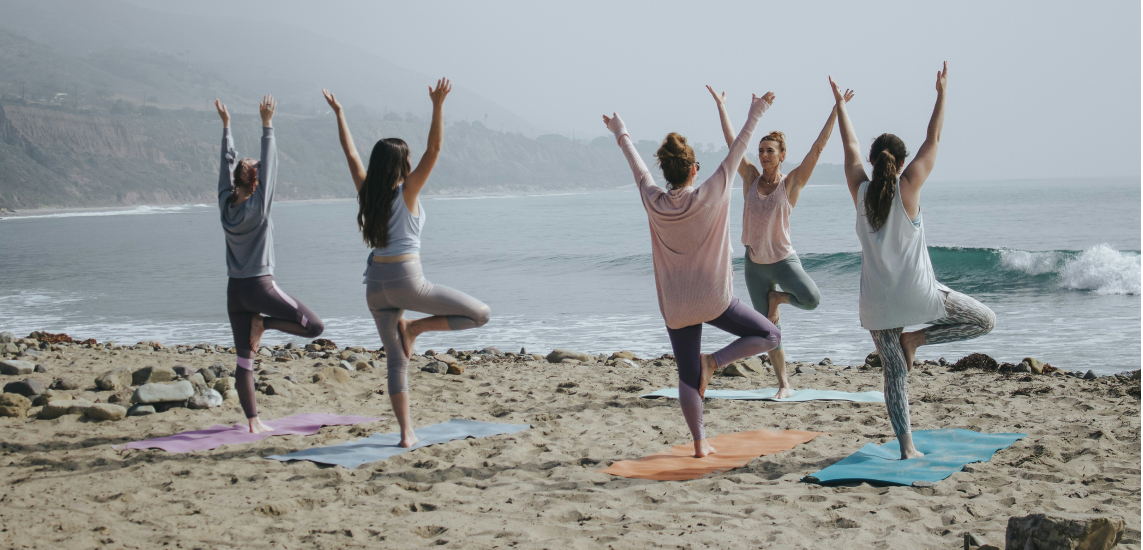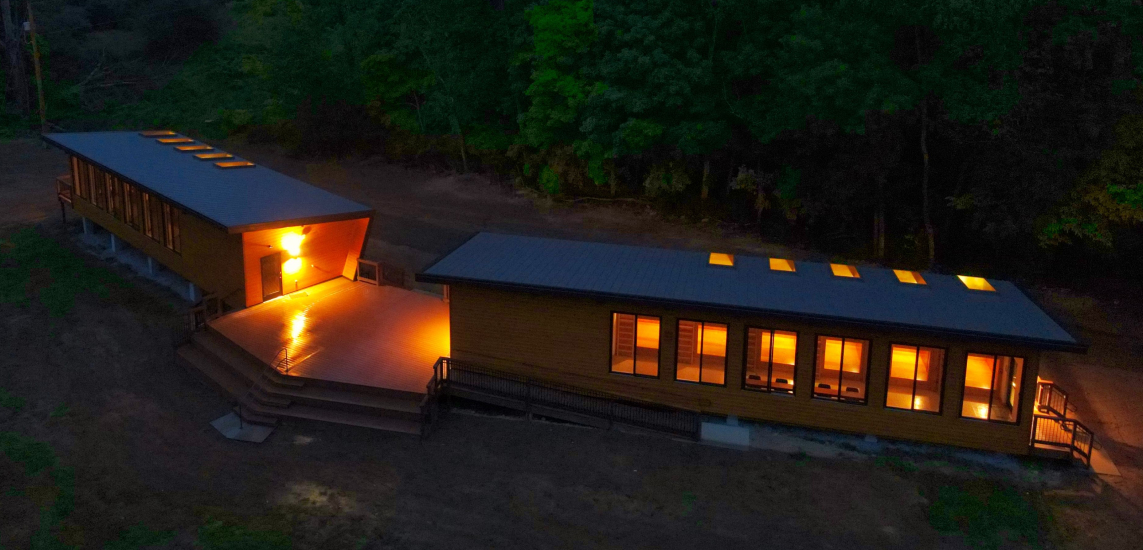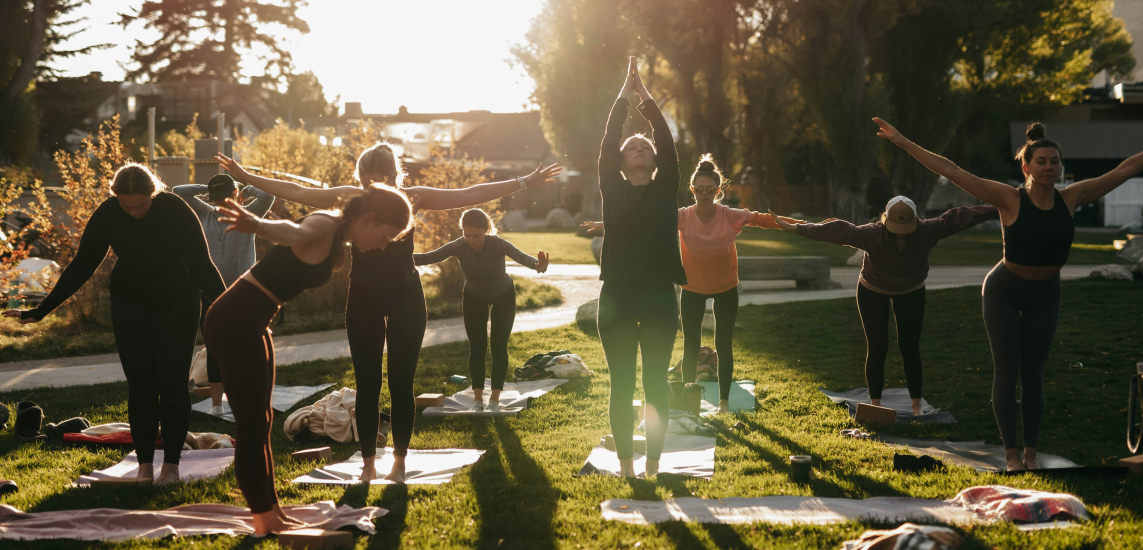This article was created using personal insights from Insight Timer’s yoga teachers and retreat hosts.
Yoga retreats have seen a surge in popularity over the past few years, becoming a go-to for individuals seeking relaxation, spiritual growth, and community. As a yoga teacher, hosting a retreat can be incredibly rewarding, both personally and professionally. Not only do you get to deepen your connection with students, but you also have the opportunity to craft a transformative experience that will leave a lasting impact.
Whether you’re a seasoned retreat leader or planning your first yoga retreat, this guide will walk you through the essential steps to ensure your event is successful—with invaluable insights from Insight Timer’s very own yoga teachers. We’ll cover everything you need to know about organizing a yoga retreat, from market research to budgeting and logistics so you can plan, promote, and host a retreat that participants will rave about. Let’s dive in!
You won’t want to miss The Reset Retreat to Sayulita, Mexico, from November 13–18, 2025. Over six rejuvenating days on the sun-kissed Pacific coast, you’ll reset your mind and body through yoga, meditation, intention-setting, and time in nature. Space is limited, with only a few spots remaining, so don’t wait to claim yours and start your journey of transformation today!
Key takeaways:
- Defining your retreat’s theme and intentions ensures a meaningful and transformative experience for participants.
- From choosing the right venue to creating a balanced schedule, preparation and flexibility are essential for success.
- Small touches like welcome kits, themed activities, and personalized follow-ups make your retreat unforgettable.
- Use Insight Timer’s platform to connect with a global community of meditators and easily list your retreat.
How to host a successful yoga retreat
1. Conduct market research
The foundation of a successful yoga retreat begins with a thorough understanding of the market. Before setting the details in stone, you need to ensure there’s a demand for your retreat and that your offering stands out in a competitive landscape. Here’s how:
Identify your target audience
Start by pinpointing who your ideal participants are. Are they beginners seeking relaxation or advanced yoga practitioners looking for an intensive experience? Make a list noting their interests and experience levels. This will help tailor your retreat to meet their needs.
If you’ve been teaching yoga for a while, you can also consider the needs of your students and what may interest them. Don’t hesitate to ask them questions or even conduct a formal survey!
Analyze competitor retreats
With so many yoga retreats online, standing out can feel challenging. But it can actually work to your advantage! Try exploring retreat marketplaces to get a holistic understanding of what’s already out there—or attending yoga retreats to gather insights!
Are there any gaps in the market that your retreat could fill? What do the most popular retreats have in common? Understanding your competitors can help you differentiate your offering and attract the right participants.
Research optimal timing
Consider when your target audience is most likely to attend. For example, weekends or holidays may be more popular, but local events or seasonal factors like weather can influence participation. Do your best to pick a time that will attract the most participants.
Evaluate market demand
Finally, research the current demand for yoga retreats in your niche. There’s a chance your chosen area may be oversaturated or simply lacking in interest. In either case, you may need to adjust your plans accordingly.
2. Define your yoga retreat vision and intentions
Having a clear vision and intention for your retreat sets the tone for the entire experience. Jacks, an Insight Timer yoga teacher, emphasizes:
“A successful retreat starts with a clear vision—who is this retreat for and what is the transformation I want participants to walk away with? From there, I focus on all the logistical pieces like securing the right venue, figuring out what time during the year works best, and creating moments for connection, learning, and rest.”
Choose a theme or focus
A well-defined theme is the backbone of your retreat. Themes can range from mindfulness and relaxation to focusing on specific yoga styles such as vinyasa or kundalini. Choose something that resonates with your teaching style and will attract your target audience.
Jacks explains how she selects her retreat themes:
“The theme always reflects duality—movement and stillness, action and surrender. I try to align it with what I feel my community needs and what resonates with me in that season.”
Set clear intentions
Get clarity on your retreat’s intentions before moving forward with logistics. Are you looking to foster a sense of community, provide space for personal transformation, or encourage disconnection from daily stressors? Whatever your goals, setting clear intentions will guide your planning and ensure a meaningful experience for participants.
Carolyn Anne Budgell, another Insight Timer yoga teacher, sets intentions by “anchoring to themes that align you to your heart’s passion and purpose as a facilitator.” She believes this approach attracts the right community.
3. Choose the right location and venue
Selecting the perfect location is critical for creating the right ambiance and staying aligned with your vision. Jacks highlights how important the right retreat center is for creating a sanctuary-like environment:
“The venue is everything. It has to feel like a sanctuary, somewhere people can truly escape and reconnect. For me, I’m always looking for places that have that duality of nature and luxury.”
Julie Murphy Yogaressa, another of our experienced teachers agrees, stressing the importance of aligning the venue with your vision and values:
“Finding the right venue takes a tremendous amount of time and research. Our happiest experiences have been when we’ve connected with like-minded hosts, particularly those who give back to local communities or contribute to environmental conservation.”
Here are some of the factors to keep in mind when selecting a yoga retreat center and location:
- Accessibility: The retreat should be easy to reach for your participants. Consider the proximity to airports, public transport, or highways.
- Climate and environment: Take into account the season and weather conditions at your retreat location.This may impact your ability to hold outdoor activities.
- Amenities and accommodation: Make sure the venue offers comfortable accommodations. You’ll want different spaces for yoga sessions, dining, and relaxation.
4. Plan your retreat schedule and activities
It’s important to strike a balance between different activities like structured yoga classes, workshops, and free time. Here are some tips for planning your schedule:
Balance structured activities and free time
Jacks notes that “some of the most magical moments are the ones that happen spontaneously.” Be sure to leave ample free time for participants to relax, explore, or journal between yoga sessions and workshops. After all, a retreat should be rejuvenating, not overwhelming!
Plan activities to match energy levels
Schedule more intense or dynamic yoga classes in the morning when participants are energized. Save restorative yoga, meditation, or workshops for later in the day when energy levels may be lower.
Allow for flexibility
While structure is important, it’s also good to remain flexible. Participants will appreciate having optional activities, so they can decide how to spend their time based on how they’re feeling.
Ready to experience a renewal retreat? Join Sedona Serenity Escape: Reflect, Reconnect, Renew at Amara Resort & Spa from March 26–29, 2026. This 4-day journey offers breathwork, sound healing, and mindful practices to restore balance, deepen connection, and bring you back to your authentic self.
5. Set your budget and pricing
Budgeting accurately is crucial when planning a yoga retreat. You’ll want to ensure your costs are covered while also providing an accessible price for participants. Jacks stresses the importance of balancing accessibility with profitability:
“Pricing is always a balancing act. I want to make my retreats accessible but also cover costs and honor the value I’m providing.”
Carolyn Anne adds that affordable pricing is important for reaching a broad audience:
“I’m not interested in a bougie property because I want other yoga teachers and people from many walks of life to be able to afford to attend.”
Keep these factors in mind when setting the budget and determining your retreat price:
- Venue and accommodation costs: This will likely be the biggest chunk of your budget. Make sure to research different venue options and negotiate pricing if possible.
- Meals and amenities: Decide whether to offer catered meals or have participants provide their own food. Many retreats offer all-inclusive pricing, covering all meals.
- Marketing and promotion: Set aside funds for advertising, such as social media ads, email marketing, and potential collaborations with influencers or studios.
- Travel expenses: If you’re traveling to the retreat location or bringing in guest instructors, factor these costs into your budget.
Consider offering early bird discounts or payment plans to make the retreat more affordable.
6. Market your yoga retreat
Once you’ve finalized the details, it’s time to promote your retreat and fill your spots. Here are some effective marketing strategies:
- Email marketing: Send personalized invitations or newsletters to your mailing list, detailing your retreat theme, location, and what participants can expect.
- Social media: Promote your retreat across platforms like Instagram, Facebook, and TikTok. Use visually captivating posts, stories, and videos to showcase the retreat’s unique aspects.
- Collaborate with local studios: Partner with yoga studios or wellness centers to reach a broader audience. Studios can help endorse your retreat or allow you to leave promotional materials.
- Create compelling retreat descriptions: Your retreat description should highlight what makes it unique and why participants should attend. Focus on the transformational aspects and the benefits they’ll experience.
In addition to these strategies, focus on creating authentic marketing materials that elevate your unique voice and perspective. Jacks emphasizes:
“My marketing is all about storytelling and authenticity. I showcase the heart of the retreat by giving people a glimpse of what they’ll experience.”
Over time, you’ll likely attract participants through word-of-mouth referrals—one of Julie Murphy’s most effective marketing techniques. By focusing on “consistently creating an exceptional yoga travel experience, people were eager to join our next retreat,” she shares.
7. Manage registrations and logistics
Managing logistics smoothly can make for a more enjoyable retreat experience. And there are many ways to do this—whether through your own website or a third-party platform. Jacks emphasizes the importance of streamlining the registration and payments process:
“I streamline everything through my website—people can register, choose their options, and make payments all in one place.”
Carolyn Anne, on the other hand, uses “Google Forms as the simplest and most low-cost method for gathering all the important information in one spot.” Another idea is to sign up for a platform like Eventbrite to handle sign-ups and payments and gather participant information.
You’ll also want to consider the following:
- Dietary restrictions: Collect information from participants early to ensure that meals accommodate various dietary needs, such as vegan, gluten-free, or allergy-specific requests.
- Room assignments and transportation: If your retreat offers shared accommodations, provide clear room options and manage requests early. Ensure participants know how to get to and from the retreat venue, whether via arranged transport or carpools.
8. Prepare for the unexpected
Even with the best-laid plans, things may not go exactly as you picture. Last-minute cancellations, weather complications, or health issues can arise at any time and it’s important to have a backup plan. Julie Murphy reminds us that the unexpected is inevitable, but “the way you respond is what can make a retreat an outrageous success or an outright disaster.”
When things don’t go as we intended, Carolyn Anne emphasizes the importance of staying grounded:
“Nothing will ever be perfect or go exactly as planned, and this is perfect! As a teacher and facilitator, doing one’s own work to remain as grounded and stable as possible before and during retreats is invaluable.”
Here are some ways to deal with unexpected scenarios:
- Have a clear cancellation policy in place to protect yourself financially. Consider offering refunds or future retreat credits for those who need to cancel close to the event.
- If your retreat involves outdoor activities, ensure you have alternative activities or indoor spaces available.
- Make sure you have a plan for managing any health-related issues, such as a participant falling ill or an emergency situation.
9. Enhance the retreat experience
Small touches can make your yoga retreat unforgettable. Go the extra mile by making personalized welcome kits with thoughtful items like yoga mats, water bottles, essential oils, or local products. You can also invite other retreat leaders or instructors to add fresh perspectives.
10. Reflect and gather feedback post-retreat
After your retreat concludes, take time to reflect on what worked well and what could be improved. Consider sending out surveys to participants to gather feedback on everything from the schedule to the location and overall experience.
Additionally, it’s a good idea to stay in touch with participants post-retreat. Jacks shares:
“After the retreat, I stay connected with participants through a WhatsApp group, followed by a 3-month check-in call to see how they’re integrating everything.”
Grow your yoga community with Insight Timer
Are you ready to share your transformative retreat with a global audience? Insight Timer makes it simple for yoga teachers to connect with a dedicated community of meditators and wellness seekers. By listing your retreat on Insight Timer’s platform, you can easily manage logistics and attract participants from around the world.
Start your journey today and inspire others to embark on a life-changing retreat.
FAQs about hosting a successful yoga retreat
Are yoga retreats profitable?
Yoga retreats can be profitable if priced correctly and marketed well. By carefully managing costs, offering early bird discounts, and filling your retreat to capacity, you can ensure a healthy return on investment.
How do I organize a yoga retreat?
Start by defining your vision, conducting market research, choosing the right location, and planning a balanced schedule. From there, market your retreat and manage logistics to ensure everything runs smoothly.
What should I include in a yoga retreat?
A typical yoga retreat includes yoga and meditation sessions, workshops, healthy meals, and free time for reflection or exploration. You can also include special events with guest instructors.
How can I make my retreat stand out?
Personalize the experience with welcome kits and guest speakers or instructors. And be sure to follow up with participants after the event. Maintaining a connection with them shows that you care about their continued well-being and personal growth—making them more likely to return to retreats in the future!
What should I budget for a yoga retreat?
Each retreat will differ, but these are the most common budget items to consider:
- venue
- meals
- marketing
- instructor fees
- travel costs







